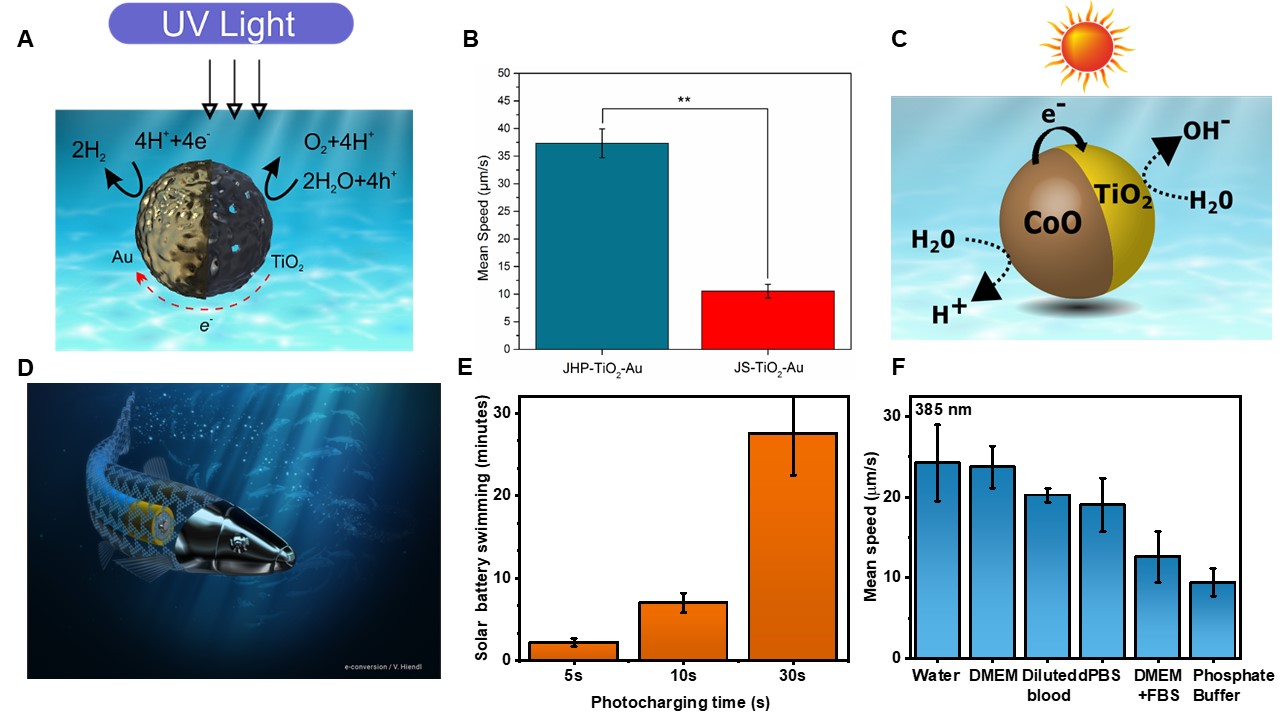
A) Janus hollow mesoporous TiO2 microswimmers for cargo carrying and B) their mean speed. C) CoO-TiO2 visible light-propelled microswimmers. D) Carbon nitride microswimmers, which can swim in dark up to 30 min and E) can have solar battery charging. F) Their mean speed in biological media.
We have developed various photocatalytic light-driven swimmers by utilizing inorganic and organic (in collaboration with Bettina Lotsch's group) materials. On the inorganic microswimmers, we demonstrated the use of a hollow mesoporous TiO2 microswimmer that swims much faster than a solid TiO2 microswimmer under a low UV light intensity with only a small amount of fuel. The use of a mesoporous structure which has a large surface area, allows for faster swimming and ability to load drugs [ ]. We also present the use of a visible light responsive CoO-TiO2 microswimmer that swims in low visible light illumination without the need for any external fuels [ ]. The microswimmers show visible light activity over a range of wavelengths from the UV to visible spectrum.
On the organic microswimmers, we demonstrated poly(heptazine imide) (PHI), a 2D carbon nitride material for the use as swimmers, they show efficient propulsion in aqueous media not only during but after illumination creating a solar battery swimming in dark. The mechanism of propulsion is also investigated in depth for different cap structures and different fuels. We find that oxygen reduction reaction is the driving reaction responsible for propulsion of all light-driven microswimmers [ ]. The PHI microswimmers without the presence of any cap structures display propulsion in different ionic and biological media and cellular environments, such as diluted blood, without requiring additional fuels. The swimmers can even swim in high concentrations of ions such as 5 M NaCl. The swimmers can be loaded with a cancer drug with high loading efficiency without any passive release. Controlled drug release on demand is demonstrated in different pH conditions and can be triggered also by illumination while being sensitive to oxygen concentrations. This enables targeted and intelligent release of the drugs based on their environment. We also work on covalent organic frameworks which can be used in biological environments and which can carry large molecule cargos for tracking delivery due to their larger structural pores.
